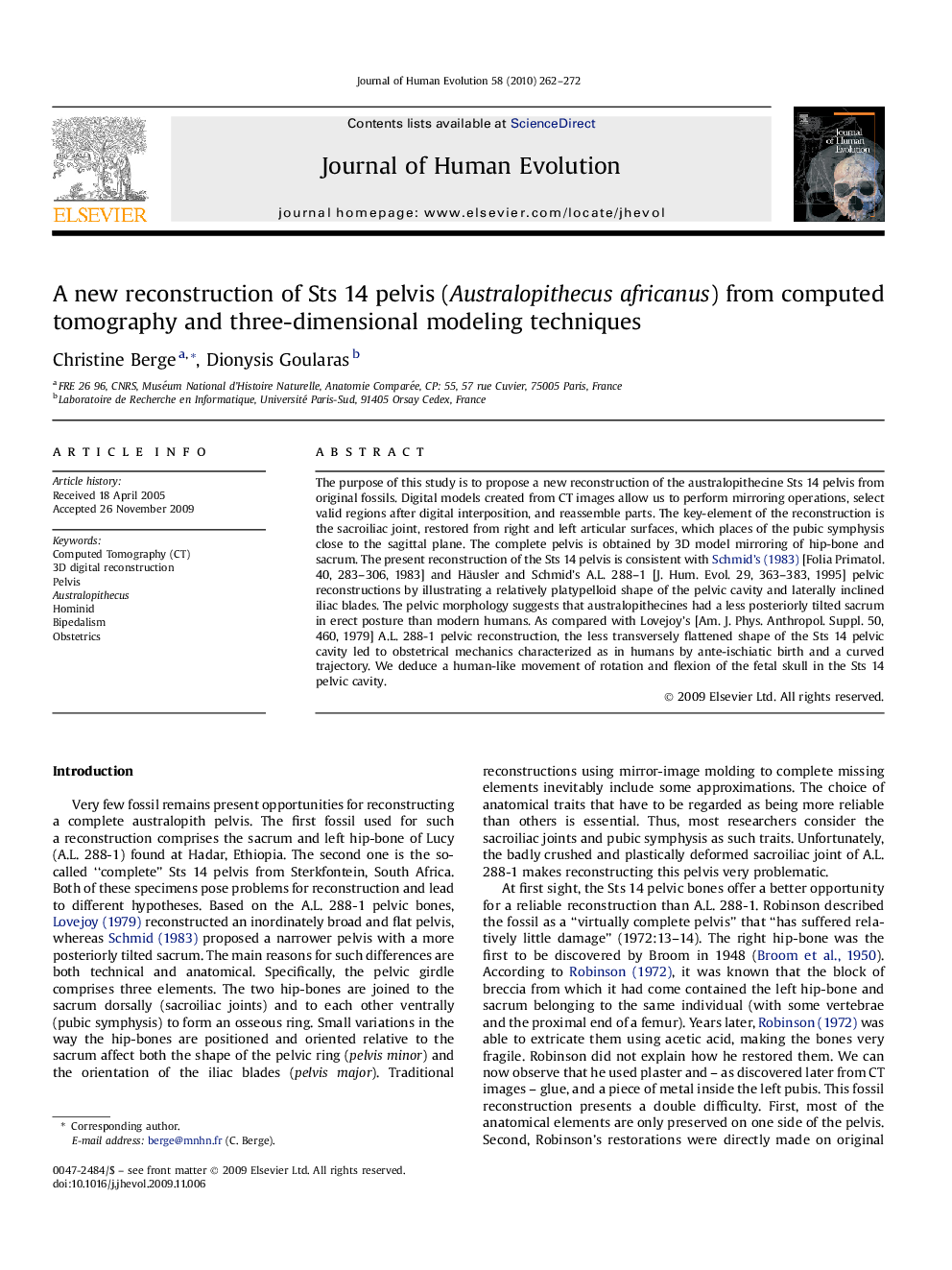| Article ID | Journal | Published Year | Pages | File Type |
|---|---|---|---|---|
| 4556834 | Journal of Human Evolution | 2010 | 11 Pages |
The purpose of this study is to propose a new reconstruction of the australopithecine Sts 14 pelvis from original fossils. Digital models created from CT images allow us to perform mirroring operations, select valid regions after digital interposition, and reassemble parts. The key-element of the reconstruction is the sacroiliac joint, restored from right and left articular surfaces, which places of the pubic symphysis close to the sagittal plane. The complete pelvis is obtained by 3D model mirroring of hip-bone and sacrum. The present reconstruction of the Sts 14 pelvis is consistent with Schmid's (1983) [Folia Primatol. 40, 283–306, 1983] and Häusler and Schmid's A.L. 288–1 [J. Hum. Evol. 29, 363–383, 1995] pelvic reconstructions by illustrating a relatively platypelloid shape of the pelvic cavity and laterally inclined iliac blades. The pelvic morphology suggests that australopithecines had a less posteriorly tilted sacrum in erect posture than modern humans. As compared with Lovejoy's [Am. J. Phys. Anthropol. Suppl. 50, 460, 1979] A.L. 288-1 pelvic reconstruction, the less transversely flattened shape of the Sts 14 pelvic cavity led to obstetrical mechanics characterized as in humans by ante-ischiatic birth and a curved trajectory. We deduce a human-like movement of rotation and flexion of the fetal skull in the Sts 14 pelvic cavity.
